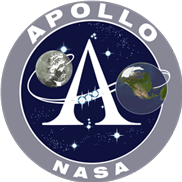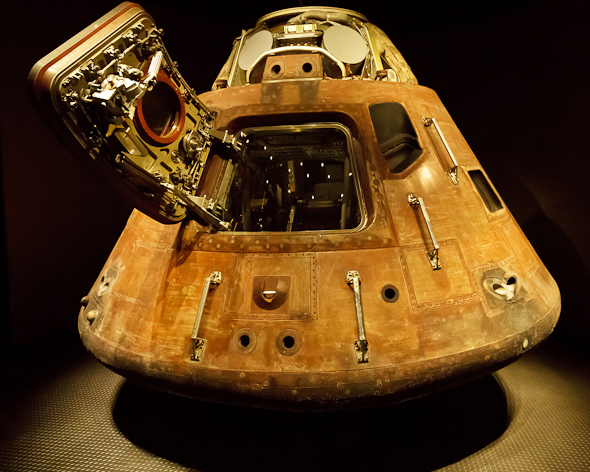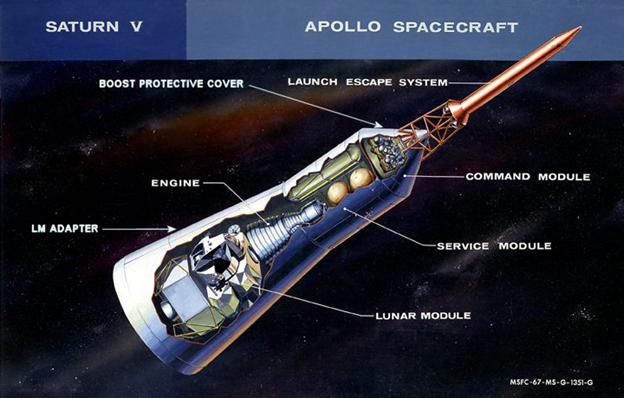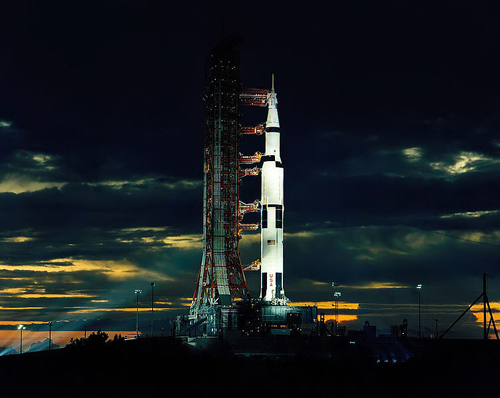NASA's Manned Space Vehicles

Apollo
When President John F. Kennedy wanted to send astronauts to the moon, the Apollo program began. It was chartered in 1961 and ran to 1972. The goals of the Apollo Program were vast. First to create technology that could meet other national interests in space. Second, achieve preeminence in space for the United State. Third, carry out a program of scientific exploration of the Moon, and lastly develop man's capability to work in the lunar environment. During the Apollo program, people from all over the world wanted to see our miracle, "Fly me to the Moon". It was a journey in exploration that pushed the boundaries of our knowledge in a very short time frame.
Apollo 11, piloted by Neil Armstrong and Buzz Aldrin, launched from Kennedy Space Center on July 16 and successfully landed on the lunar surface on July 20 1969. As Neil Armstrong stepped off the footpad onto the lunar surface he quoted the immortal words, "That's one small step for man, one giant leap for mankind".
The Apollo spacecraft was powered into space using Saturn 1B and Saturn V rockets.
Apollo Command/Service Module
The Command/Service Module (CSM) was made two parts, the Command Module, a cabin which housed a crew of three and equipment needed for re-entry and splashdown; and a Service Module that provided propulsion, electrical power and storage. The command module's heat shield was made of 40 individual panels. The aft heat shield consisted of four brazed honeycomb panels and the inner and outer skin was aluminum with a steel honeycomb core. The central pressure vessel of the command module was its sole habitable compartment. It had an interior volume of 210 cubic feet and housed the main control panels, crew seats as well as the guidance and navigation systems.
The Saturn V Rocket
The Saturn V (pronounced "Saturn Five") was an American human-rated expendable rocket used by NASA's Apollo and Skylab programs from 1967 until 1973. A multistage liquid-fueled launch vehicle, NASA launched 13 Saturn Vs from the Kennedy Space Center, Florida with no loss of crew or payload. It remains the tallest, heaviest and most powerful rocket ever brought to operational status and still holds the record for the heaviest launch vehicle payload.
Apollo Saturn Missions
On January 27, 1967 the Apollo 1 fourteen (14) day mission scheduled to launch in February exploded, killing Gus Grissom, Edward White, and Roger Chaffee.
On October 11, 1968 Apollo 7 Astronauts Walter Schirra, Donn Eisele, and Walt Cunnningham performed tests during the eleven (11) day orbit. This mission would provide the first live television pictures of space.
On December 21, 1968 the Apollo 8:Saturn 5 rocket sent the astronauts Frank Borman, Jim Lovell, and William Anders to the far side of the moon. The mission completed ten orbits around the moon. At the time the Saturn 5 was the most powerful rocket ever used in manned flights.
On March 3, 1969 the first manned test of the lunar module occurred while Scott remained aboard command module.
On May 18, 1969 The dress rehearsal for Apollo 10 lunar landing came within ten (10) miles of the surface of the moon taking pictures of the Apollo 11 landing site.
On July 16, 1969 Apollo 11 successfully completed the first manned mission to the lunar surface and Neil Armstrong became the first man on the moon, later joined by Buzz Aldrin to perform moonwalks.
On November 14, 1969 Apollo 12 landed on the moon and Pete Conrad, Richard Gordon and Allen Bean collected lunar rocks and soil while they observed parts of the unmanned Surveyor 3 spacecraft.
On April 11, 1970 Apollo 13 attempted the third manned lunar landing was aborted due to an explosion aboard. James A. Lovell, John L. Swigert and Fred W. Haise used the lunar module as a lifeboat and safely returned to Earth.
On January 31, 1971 Apollo 14 successfully landed on the moon and they were the first to use a tool cart on the moon, for a collection of more rock and soil samples. Alan Shepard, Stuart Roosa, and Edgar Mitchell were responsible for this successful mission.
On July 26, 1971 Apollo 15 with David Scott, James Irwin, and Alfred Worden became the first astronauts to use the Lunar Roving Vehicle during the fourth successful lunar landing.
On April 16, 1972 John Young, Charles Duke and Ken Mattingly visited the previously unexplored lunar highlands, using the Lunar Rover for a second time on the Apollo 16 mission.
The last mission, Apollo 17 occurred on December 7, 1972. Eugene Cernan, Ronald Evans Harrison Schmitt completed three (3) moon walks, obtained rock and soil samples, and used a land rover to cover more than eighteen (18) miles of territory.
← Project Gemini Space Shuttle Program →
More than 20 million meteoroids enter Earth's atmosphere every day.


